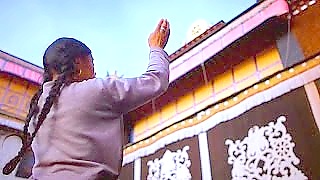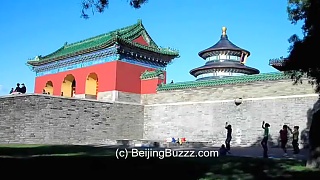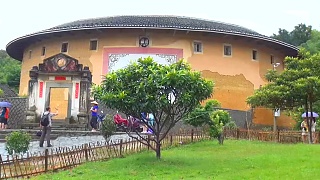
|
With Roaming N Watching ...
With Fyfy & Nyny ...
QiBao Ancient Town visitor guide
Overview
QiBao Ancient Town, located in the MinHang district of ShangHai, is a picturesque water town known for its well-preserved ancient architecture, historical sites, and traditional culture. The name "QiBao" means "Seven Treasures," and the town is famous for its seven historic treasures, though only a few remain today. QiBao offers visitors a glimpse into China's rich cultural heritage and a chance to experience traditional JiangNan water town scenery.
History
QiBao Ancient Town has a history that dates back over a thousand years to the Northern Song Dynasty. It flourished during the Ming and Qing dynasties as a prosperous commercial hub. Today, QiBao retains much of its historical charm, with well-preserved buildings, stone bridges, and narrow canals that transport visitors back in time.
Main Attractions
QiBao Temple
QiBao Temple is a significant religious and cultural site in the town. Originally built during the Song Dynasty, the temple has undergone several restorations. It is an important place of worship and a symbol of the town's spiritual heritage.
QiBao Old Street
QiBao Old Street is the heart of the ancient town, lined with traditional shops, teahouses, and food stalls. The street is divided into North Street and South Street, each offering unique experiences and local delicacies.
QiBao Shadow Play Art Museum
The QiBao Shadow Play Art Museum showcases the traditional Chinese art of shadow puppetry. Visitors can learn about the history of shadow plays, watch live performances, and even try their hand at manipulating the puppets.
QiBao Zhuzhai (Old Residences)
QiBao Zhuzhai are ancient residential buildings that offer a glimpse into the traditional lifestyle of QiBao's inhabitants. These well-preserved houses reflect the architectural style of the Ming and Qing dynasties and provide insight into the daily lives of ancient Chinese families.
Culture and Traditions
QiBao Ancient Town is a cultural gem that showcases traditional JiangNan water town culture. The town is known for its traditional crafts, local cuisine, and cultural performances. Visitors can explore the various workshops and studios where artisans create silk, paper-cuts, and other traditional handicrafts.
Activities and Experiences
Boat Rides
One of the best ways to experience QiBao Ancient Town is by taking a boat ride along its narrow canals. The boat ride offers a unique perspective of the town's architecture and serene waterways, providing a peaceful and scenic experience.
Food Tasting
QiBao is renowned for its local delicacies, including QiBao rice cakes, braised pork, and stinky tofu. The food stalls and restaurants along QiBao Old Street offer a wide variety of traditional snacks and dishes that are a must-try for visitors.
Cultural Performances
Visitors to QiBao can enjoy various cultural performances, including traditional Chinese opera, shadow plays, and folk music. These performances are often held in public squares and cultural centers, providing an authentic cultural experience.
Accommodation
QiBao Ancient Town offers a range of accommodation options, from traditional guesthouses to modern hotels. Staying in a local guesthouse provides an immersive experience and a chance to enjoy the town's charm after the day-trippers have left.
Travel Tips
Best Time to Visit: The best time to visit QiBao Ancient Town is during spring (March to May) and autumn (September to November) when the weather is mild and pleasant.
Getting There: QiBao Ancient Town is located about 18 kilometers from ShangHai city center. It is accessible by metro (Line 9, QiBao Station) or by taxi. The journey takes approximately 30-40 minutes.
Opening Hours: The town is open to visitors daily from 8:30 AM to 4:30 PM.
Entrance Fees: There is no entrance fee for the town itself, but some attractions and museums within the town may charge a small fee.
Dress Comfortably: Wear comfortable walking shoes, as the town's streets are paved with cobblestones and can be uneven.
Respect Local Customs: When visiting temples and cultural sites, be respectful of local customs and traditions. Always ask for permission before taking photos of people.
|
 Geopolitics update – August 2024 (3)
Geopolitics update – August 2024 (3)







![`US-sponsored separatist groups, backed by Washington for decades, are being mobilized to attack and undermine activities related to the BeiJing 2022 Olympics, starting with the torch relay in Greece. I explain the background of the “Free Tibet” movement and how the US government, through the CIA, backed it as early as the 1950s and transferred its operations to the National Endowment for Democracy (NED) [or `Dominion` / enslavement]. ` With The New Atlas . . . Bonus films - terror activities by US-backed `opposition` in Myanmar . . . Bonus film 2 - subverting the `left` . . . Bonus film 3 - on Ecuador . . . Bonus film 4 - on Cambodia . . . They say : `How dare you put your face in front of my fist ! Serve your master. Or else. ` More . . . On the US plan to nuke Chinese cities - as revealed by Daniel Ellsberg, famous for the `Pentagon Papers`, with NuMuves . . . On the Falun Gong cult . . . *** Planning war on China - part 11 - don't miss it ***](https://img.youtube.com/vi/2w31eNNcGVU/mqdefault.jpg)





























